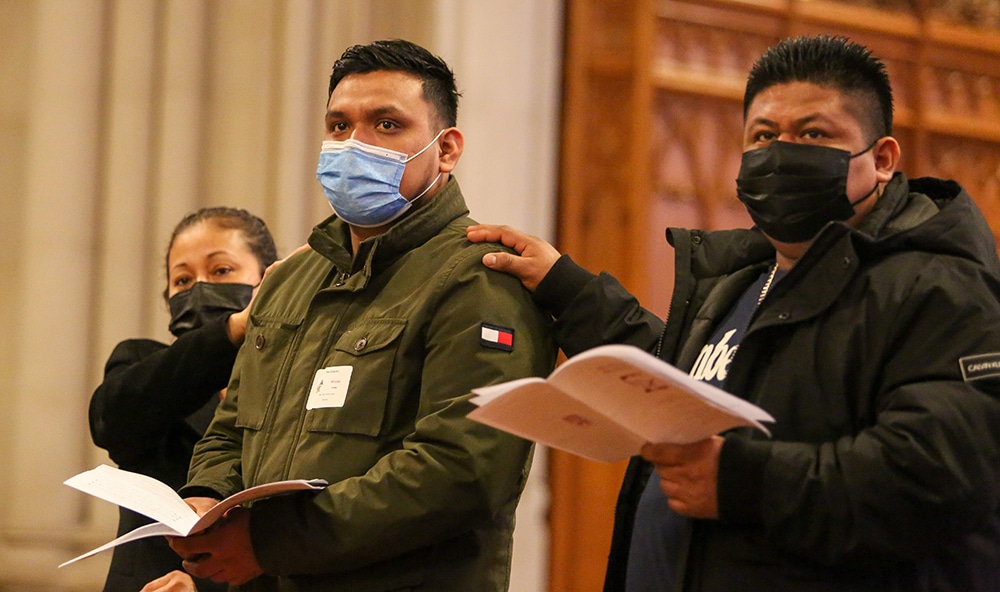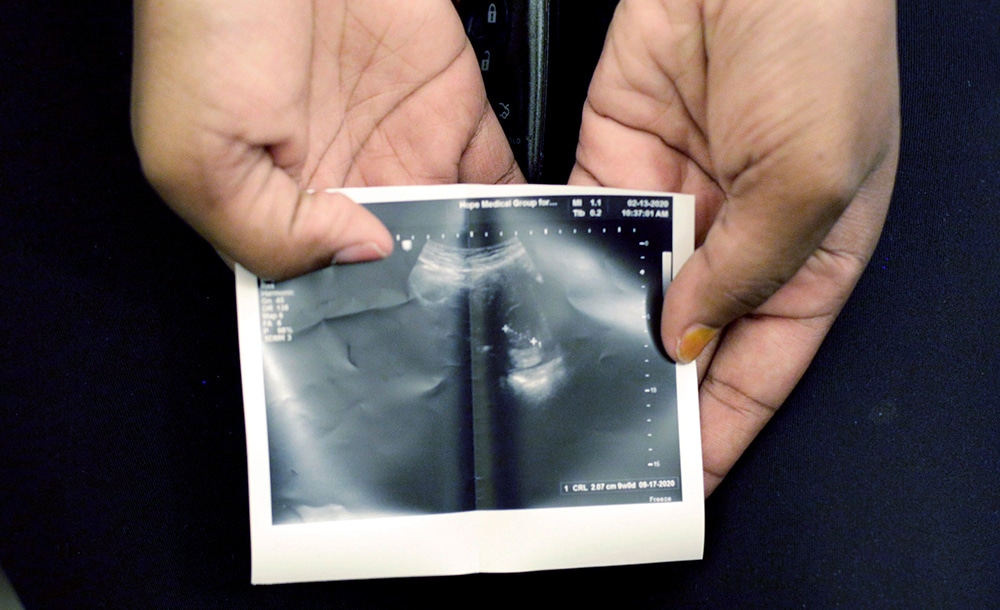BISMARCK, N.D. (CNS) — The University of Mary’s Marek Dojs sees a lot of symbolism in decorating Easter eggs in the Pysanky Slavic style, and as he teaches his students the ancient folk art, he ties in its spiritual aspects.
“This tradition, this art comes back from pre-Christian times in Europe,” Dojs explained. “The eggs are symbolic to new life. People saw them as connections to the Divine. Birds would lay them, and birds traverse in the heavens, which we can’t, so birds are connected to heaven. If you could get a hold of an egg, you had some sort of connection to the heavens.”
He teaches his students a mix of Ukrainian and Polish styles of the art form — which starts with a washed and dried uncooked white egg, and thin lines of wax are used to create a design.
Patterns are drawn on the egg with wax, which then protects the covered areas from the dye that is applied. By repeating this process with different colors of dye, a multicolored pattern is built up. Finally, the wax is removed to reveal the colors that were covered up at each stage.
Or the other primary style is a scratching style — scratching a design onto the egg and putting it through the dyeing process.
“The Easter egg comes from pagan times, but when Christians came into the Slavic region, they looked to what they could Christianize, and the role of the egg in local tradition “could be easily Christianized,” Dojs explained. “The egg kind of represented the tomb, the life inside it.”
Dojs, an award-winning filmmaker who is associate professor and chair of the university’s communication program, grew up in a British-Polish family.
He taught himself the Pysanky Slavic art of decorating eggs about 15 years ago. He has always given his creations away to family members and co-workers. One year a university co-worker suggested he teach a class in the art form.
At the University of Mary, he said, students are required to take an aesthetics course, “something that focuses on beauty, the creation of beauty and a bit of analysis of beauty.” So he decided to offer the course — in the spring semester “because of Lent and the Easter season.” It ties into the spiritual aspects of the university and cultural aspects “so connected to our state and region,” he said.
He compares the process of taking a new white egg and gradually dyeing it darker and darker “and bringing it to the light of a candle” to the life of a baptized Christian.
“When we are baptized we are fresh, we’re clean, we’re completely free of sin, but as our life moves on, we go through things that are hard,” Dojs said. “We fall into sin, we have things that scar us in our life — it’s like the wax that then goes on the eggs — and then as we age, it’s like the dye that (the egg) goes through and at the end when we are completely dark.”
At the end of creating the eggs, they are emptied of the yolk inside and held up to the light of a candle to remove the wax, with the colors applied intact.
“The candle … represents the light of Christ,” Dojs said. “When we empty ourselves and bring ourselves to Christ and wipe away the sin, we wipe away the darkness. We are created anew, but those elements we thought in our lives were difficult to go through, they end up showcasing all the colors.”
He added: “In our struggles and our darkness, that’s where God’s glory is going to be shown, and so when I removed the wax from eggs that’s what I think of and share with the students.”







